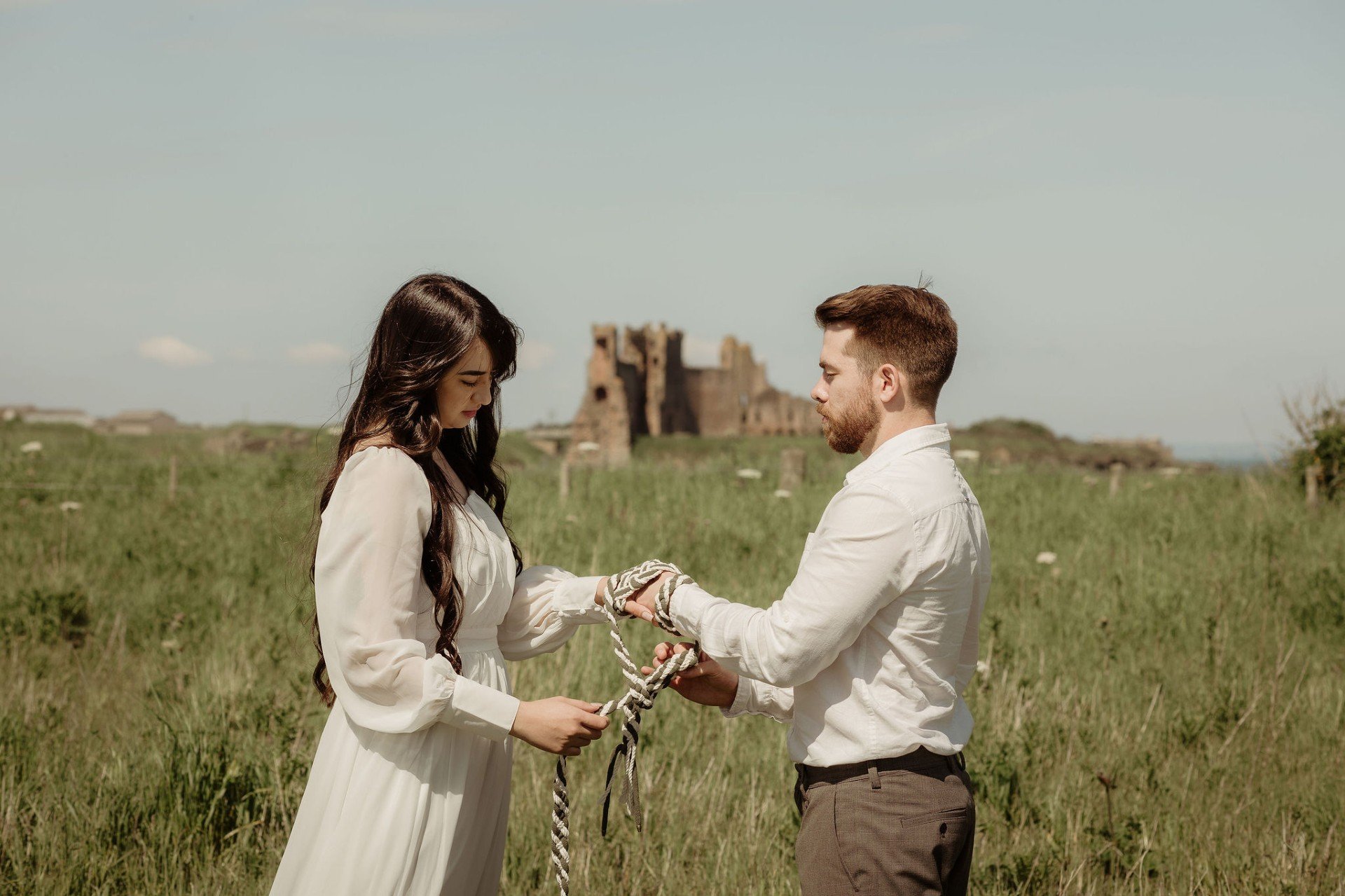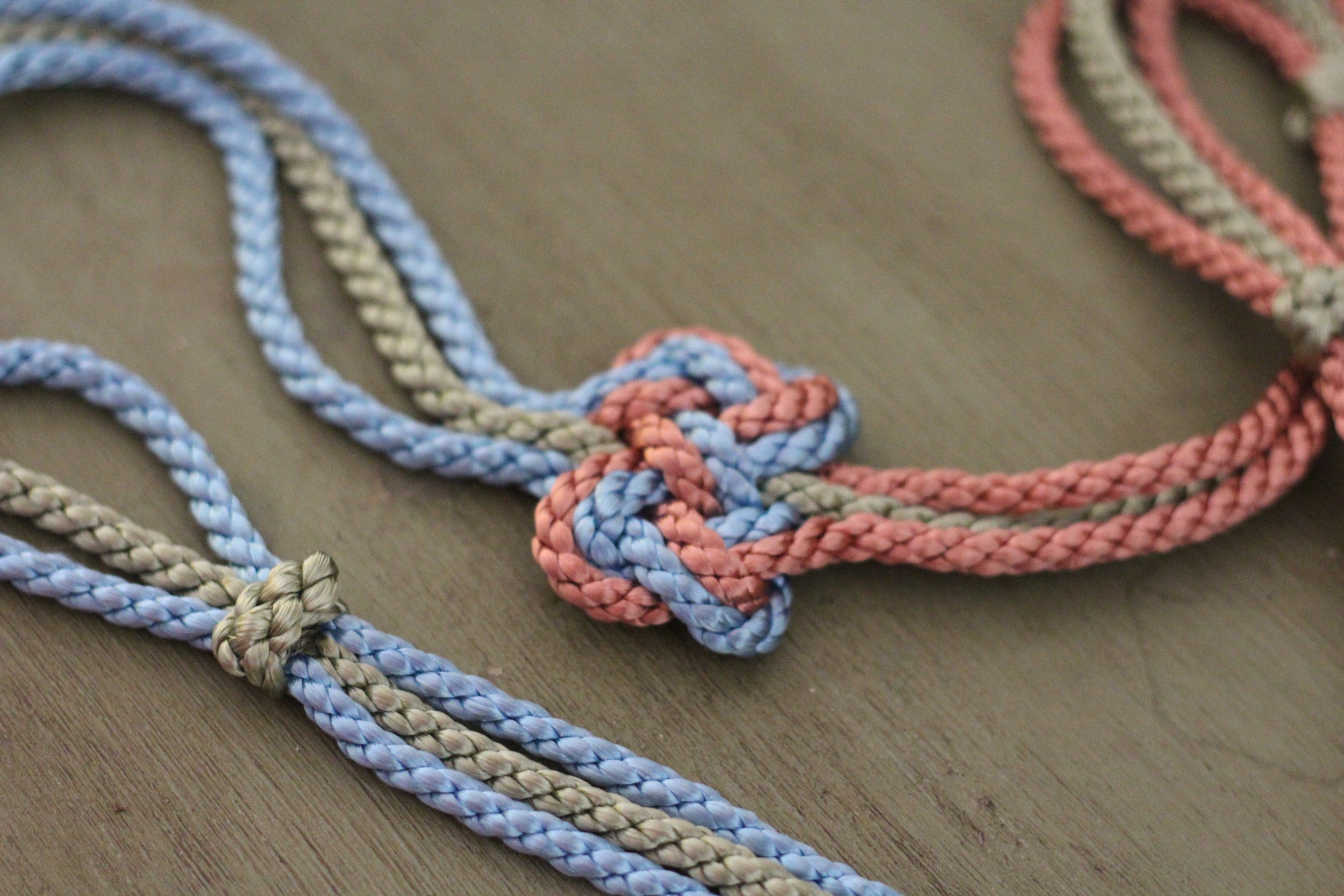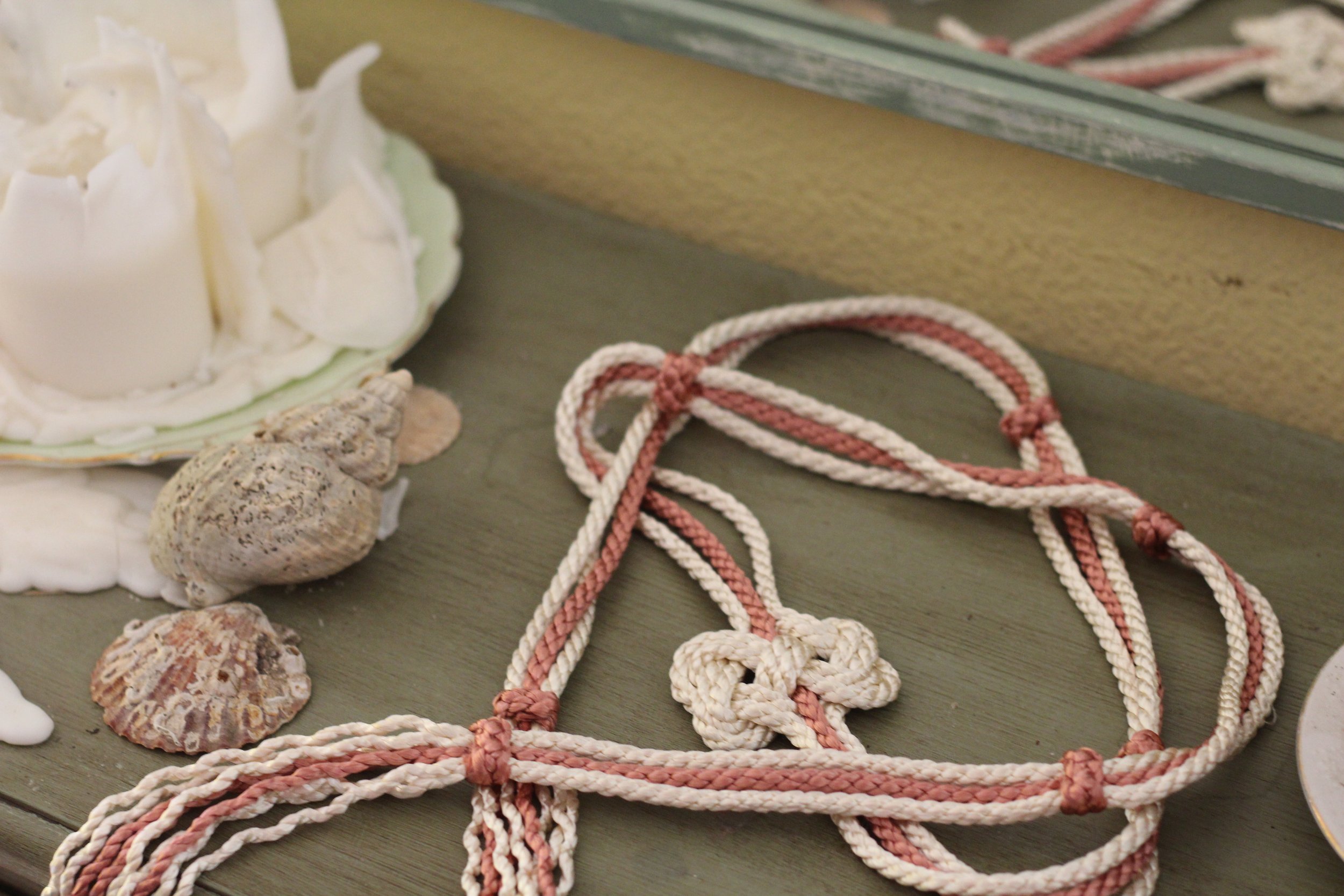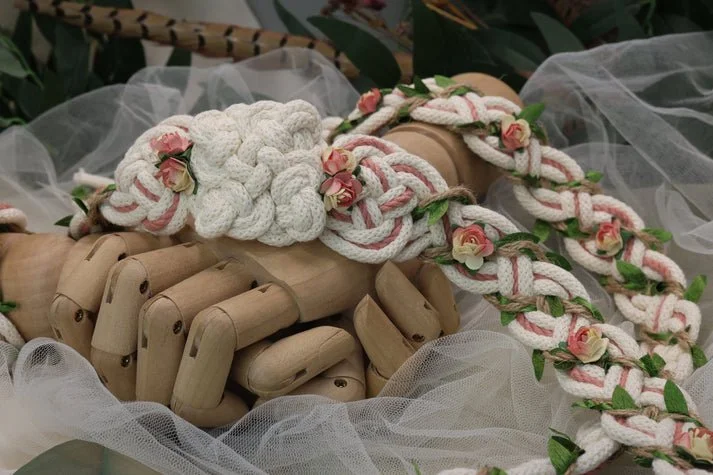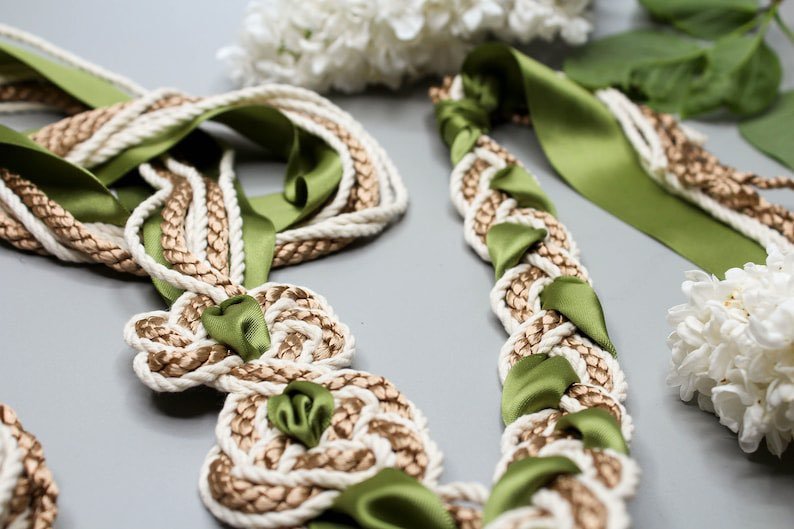Celebrating three years of Ceotha Studio
I’ve been designing, making, and selling handfasting cords for about 8 years now but it’s been three years since I quit my job, registered a business and started to make building Ceotha studio my full-time job. So now, on the occasion of our third birthday, I thought it might be a great time to reflect on my journey as an Artisan so far. I’ll start by sharing a little bit about how I got into this, what inspires me, and how I feel about people copying my designs. If you want to go straight to the genesis of the specific designs, skip the next three paragraphs
My designs are inspired by Celtic Knotwork and ideas about Celtic Mysticism. While I use pictures of Celtic Art as an inspiration for my work, it’s important to note that as far as we know, Celtic Knotwork was essentially a graphic design element, not literal knots tied into rope or fabric (in fact, one of the main challenges in designing my cords has been to find ways to translate drawn or chiselled lines that don’t have to obey the laws of physics into knots that hold themselves up an require a degree of structural integrity). Similarly, while I love reading about Celtic folklore and traditions, it’s important to note that we know very little for sure about how the Ancient Celts lived. There is a balance to be struck: As a Social Anthropologist by training, I engage deeply and carefully with the historic and social context of handfasting. As an artist, what I love about the Celticity of my designs, other than the fact that I think Celtic Knotwork is beautiful, is the idea of linking to a realm ‘before’ organised religion and patriarchal capitalism, a realm where two souls can meet as equals and forge a union untainted by prescriptive ideas of what love or life together should look like. The meaning of Celtic knots is often ambiguous and depends on context, so they are a beautifully versatile way to express unique love stories.
Our Serch Bythol design
For several years now, I have been coming across other makers copying my designs and labelling them as Celtic handfasting cords as though this were an established or authentic style. While I love the idea that our studio is impacting what people think of as handfasting cords, I really wish that these copies referenced us. To claim these designs are authentically Celtic perpetuates disingenuous ideas about historical Celts and also erases my contribution as an Artist who has been working incredibly hard to strike the balance between historic inspiration and artistic innovation.
I started developing a fascination with handfasting cords shortly after I got married (while I did make my own handfasting cord for my wedding, it looked nothing like the cords our studio makes now), although the way I actually ended up designing them was mostly serendipity. I had always been an avid crafter and while I was writing my PhD thesis I was running a small etsy shop to fund my crafting. One day, I attended a macrame workshop my friend was running. This started a fascination with knots. On a whim, I had the idea to add a handfasting cord to my etsy shop. I looked at what other handfasting cords people were making, and among many beautiful weaves and braids, there were a few that featured a heart knot. So I went to look at other knots and quickly ended up in a rabbithole of Celtic knotwork. I found the double hearted love knot (the same knot that is now in the middle of my logo) and started experimenting with how I could translate it into …
Double Hearted Love Knot
Double hearted Love Knot
The result of this was the original Love Knot design, based on the Celtic Love knot. While I had figured out a whole bunch of ways to tie this knot, I thought this really imbued the design with meaning: two different colours meeting in the middle and one colours that runs all the way through. A representation of what what we each bring individually to a relationship, how we become intertwined, and what we share.
Double Hearted Love Knot in pink and ivory
Triple Love Knot
A few months after the Original Love Knot started selling on etsy, my godmother was getting married and I wanted to step things up a notch. A popular idea in Celtic Folklore is that the number three is particularly potent, so I decided to incorporate this into the design. Fun fact: I designed the colours of the cord to match my godmothers wedding dress but then she changed dress a couple of weeks after the ceremony and the cord no longer matched. For many years this was our most popular cord.
Tartan Triple Love Knot
Bloom
After this came the bloom design. The first bloom cord (unique rose) was inspired by my mother and her love of roses. For the knot, I was inspired by a ‘flower knot’ that I saw briefly during my research but then could not find again. As I went looking for it for days after that I came to believe that it might have been a variation of a Dara knot. The Dara knot is a modern design, but is inspired by Celtic Lore. It represents unity and strength, as well as the Oak tree.
Infinity Tie
Less than a year into my journey of designing handfasting cords, I started realising that not everyone tied their cords the same way during the ceremony. The style I had been familiar with was for the cords to be tied underneath the hands. This worked perfectly for my designs which featured a decorative knot in the center. However, the center knot design didn’t work for people who wanted to use the ‘infinity tie’ style of tying the knot because it literally tied a new knot into the center of the cord. To accommodate for this, our first infinity tie cords were born - they still featured Celtic knotwork and other decoration but had a lose section in the middle into which the infinity knot could be tied. While most of the cords we sell today are Center Knot designs, pretty much all of our designs can be ordered as an infinity tie instead.
Nine Knot
The inspiration for the Nine Knot design was two-fold: I had found this rope in a particularly beautiful shade of green and I wanted to make a cord that really leaned into the Celtic Knotwork more than anything. At the same time, I had been spending a lot of time with an elderly very witchy friend of mine who guided me into the world of Celtic mysticism and felt making a cord that honoured the number 9 (a particularly powerful number in Celtic folklore) would be a great fit. This was also the first time that I used an infinity knot at the center of my cords. Since first coming up with this design many years ago, variations of the Nine Knot have become the most popular of our designs.
Our Nine knot design
Hearts Entwined
While a lot of the knots I use have hearts within them or are broadly understood to mean ‘love’ I’ve had several requests over the years to use more explicit heart shapes. Ultimately this resulted in the ‘hearts entwined’ design where two hearts meet and reach out for each other in the middle of the cord. This is a simple but effective design, which is particularly popular with our DIY kits. Later this month we will be launching a slightly more complex version of this design… stay tuned!
Hearts Entwined design- Ariana Cruz Photography
